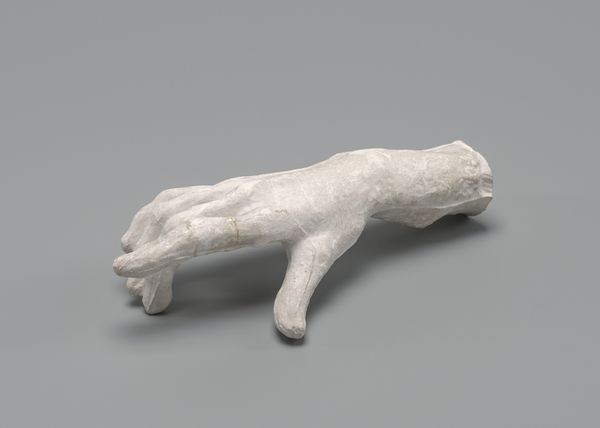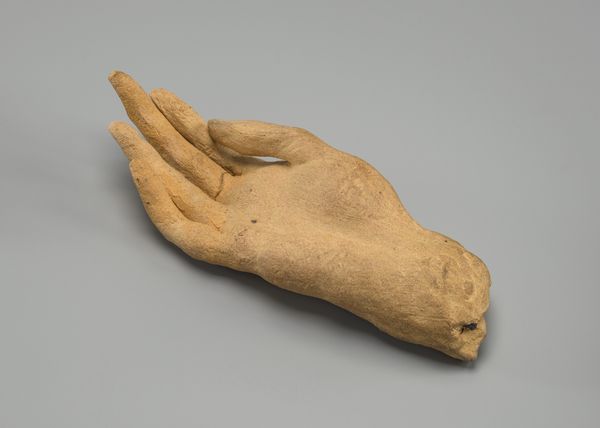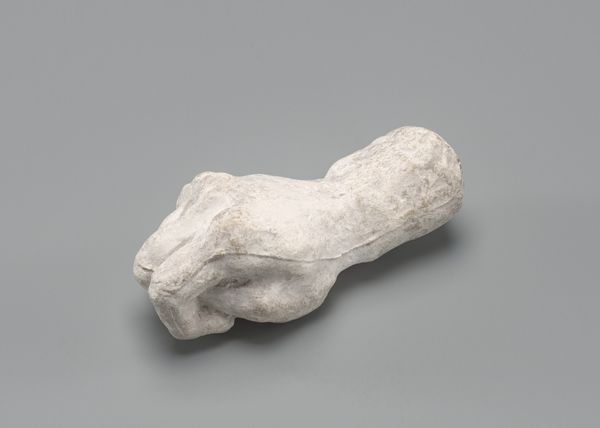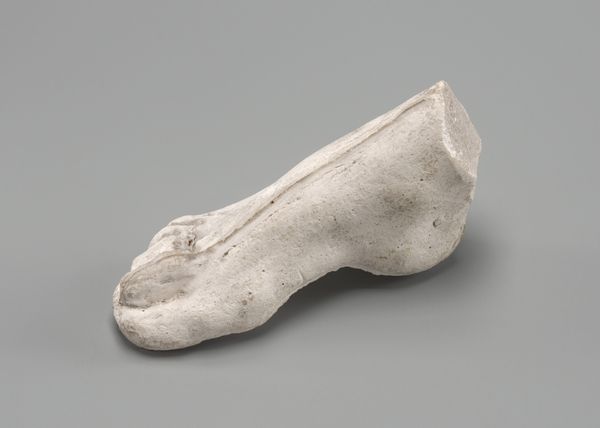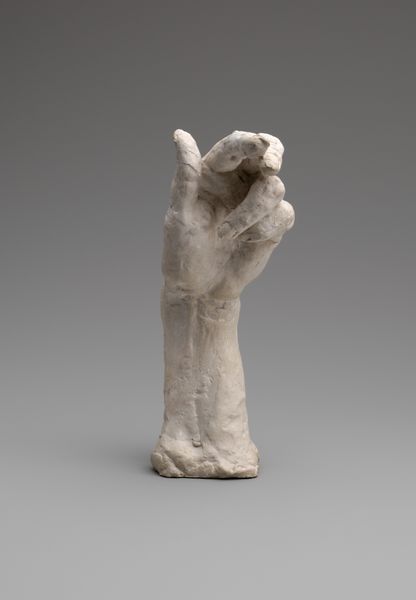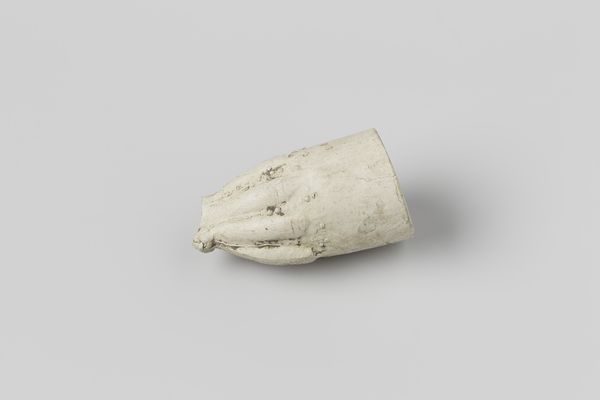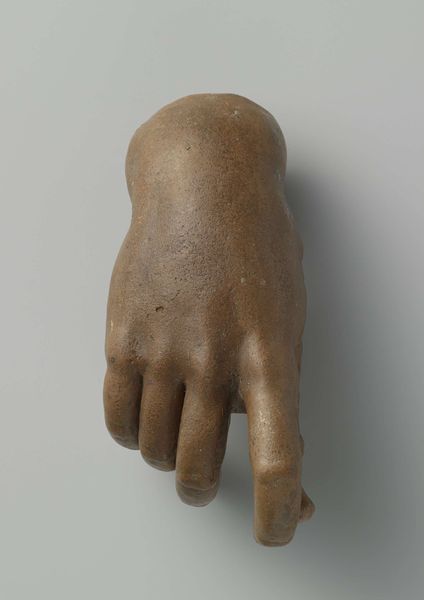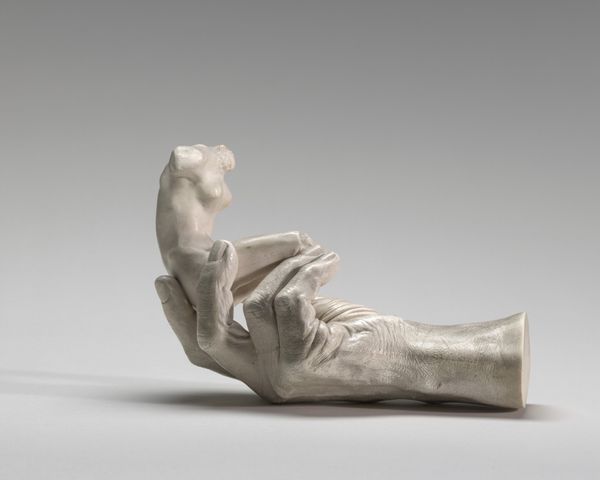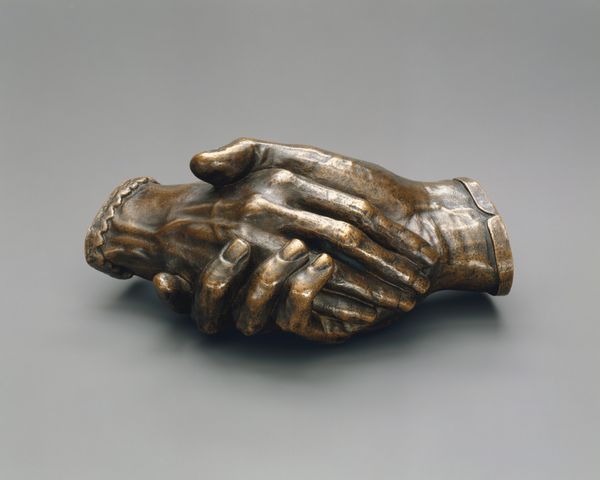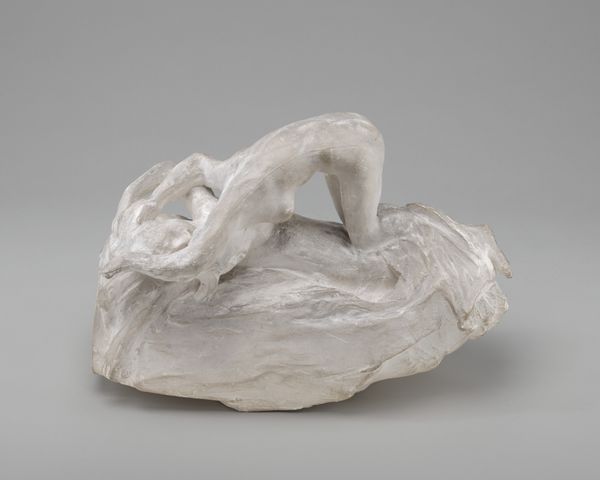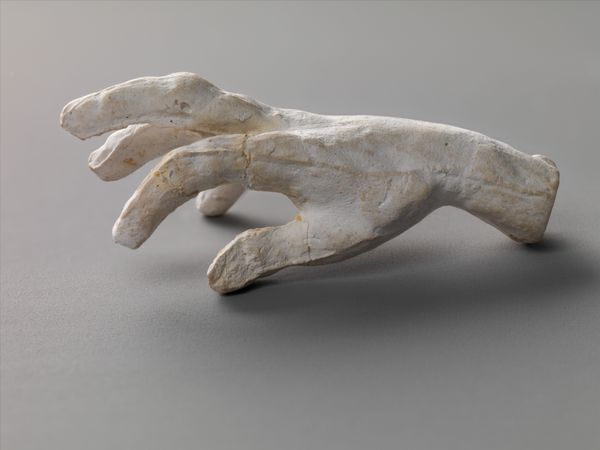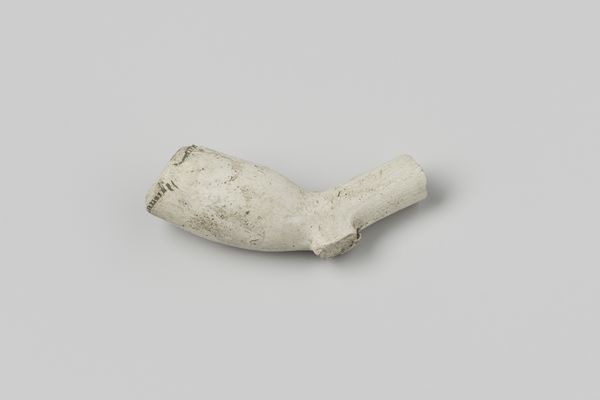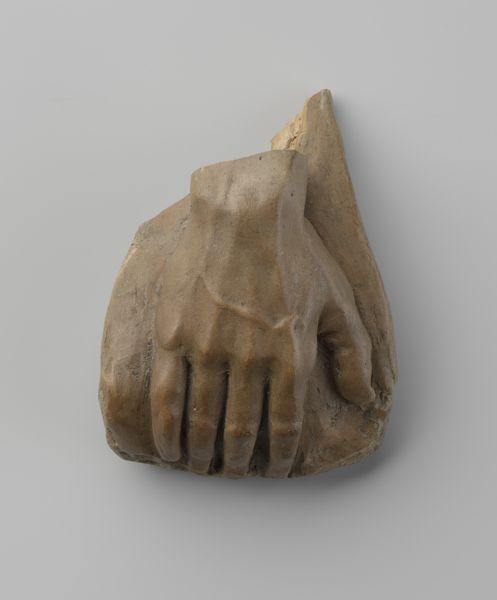
metal, bronze, sculpture, marble
#
portrait
#
metal
#
classical-realism
#
bronze
#
figuration
#
sculpture
#
academic-art
#
marble
#
modernism
Dimensions: overall (greatest extension): 8 cm (3 1/8 in.)
Copyright: National Gallery of Art: CC0 1.0
Editor: This is Rodin’s "Right Hand," likely from around 1880. It’s a small sculpture, often cast in bronze or marble. It strikes me as being somewhat unsettling; there's something so isolated and vulnerable about just a hand, severed at the wrist. What do you see in this piece? Curator: Well, beyond the literal representation, the hand, throughout history, has been laden with symbolism. Consider its role in gestures, from blessing to aggression. This hand, specifically, prompts questions. Is it reaching, grasping, or simply resting? Rodin captures a moment pregnant with potential meanings. It is disconnected, yet potent, symbolizing fragmented existence, agency, skill, a maker's tool. Editor: Fragmented existence? That’s interesting. Could you explain more? Curator: Certainly. Think about the classical tradition of idealized bodies. Rodin often disrupted that, presenting partial figures. This fragment embodies modernity's break with tradition. Each part speaks of its role within the larger context, the symbolism attached to individual fingers - power, fate. By isolating it, Rodin forces us to confront this weight. Does it feel like an artifact to you? Editor: Now that you mention it, a little. The neutral color, the clean cut at the wrist... it feels very archaeological. I hadn't considered it that way initially, I appreciate how the historical weight infuses something that appears, on the surface, quite simple. Curator: Exactly! The power of symbols lies in their layered meanings, built up over time, carried and recarried from one image to the next. Understanding these cultural memories allows us a richer interpretation. Editor: Thanks, I'll definitely think about the weight of these symbols and fragments going forward. It reframes my understanding completely.
Comments
No comments
Be the first to comment and join the conversation on the ultimate creative platform.
